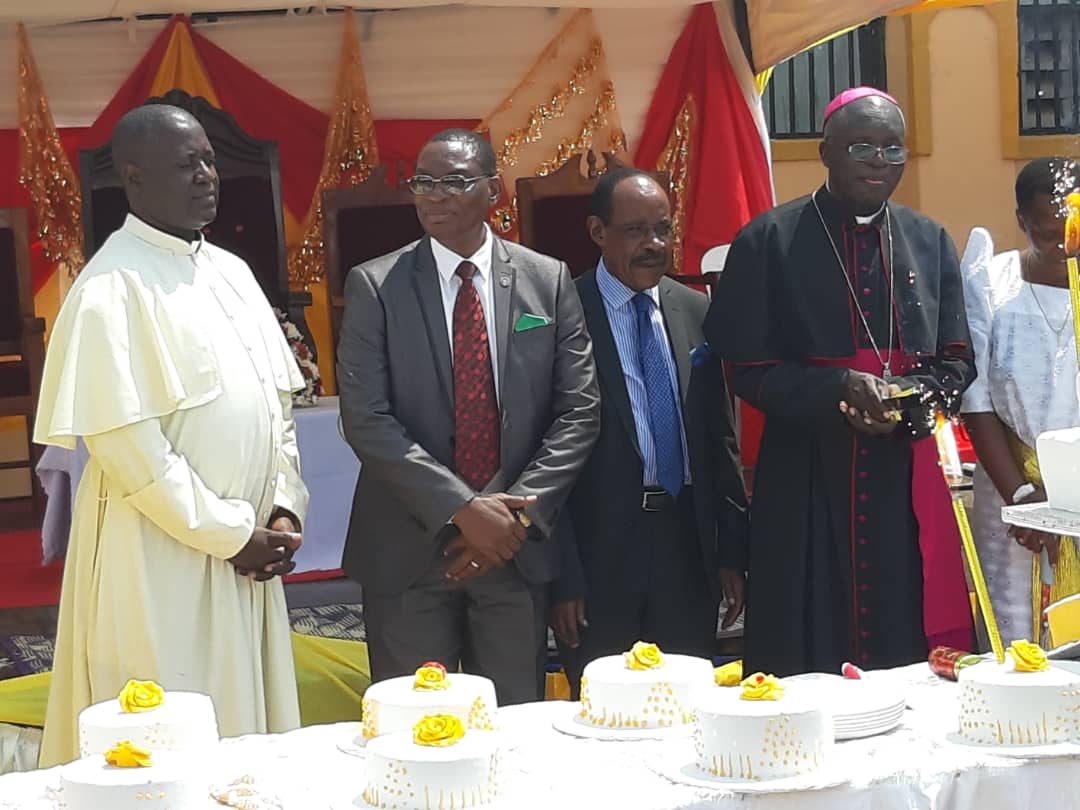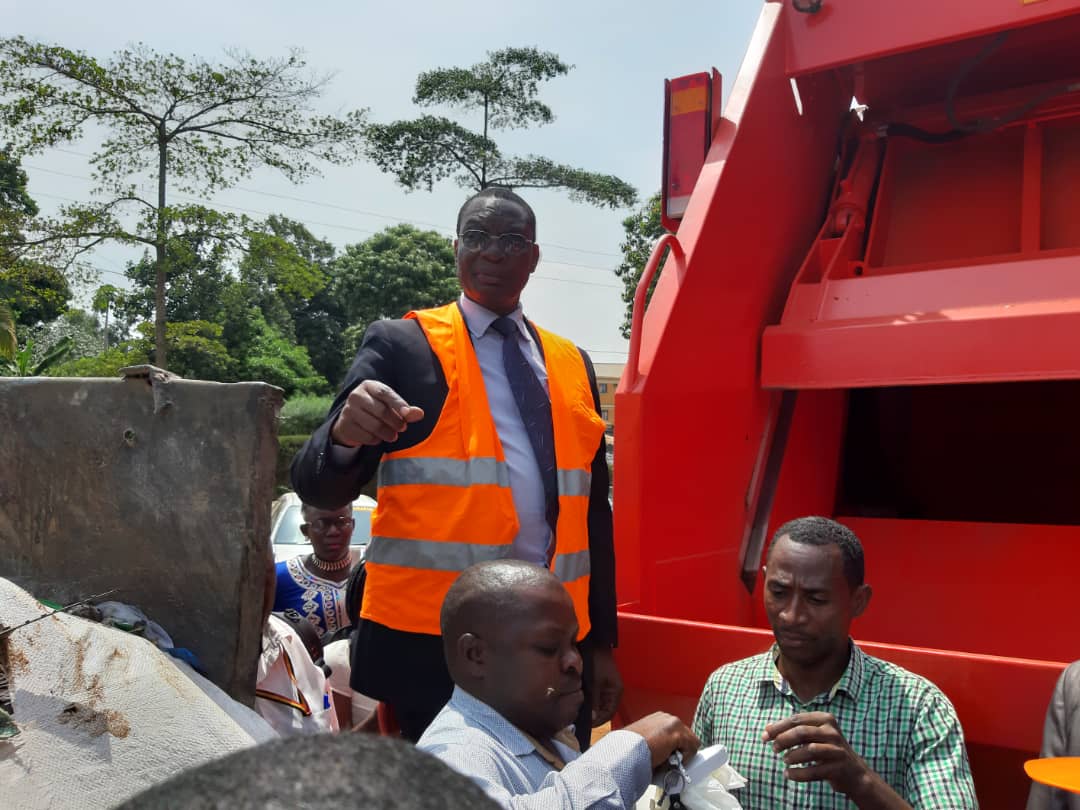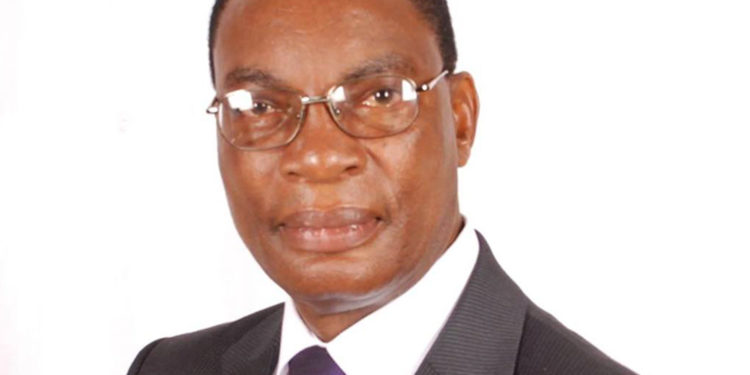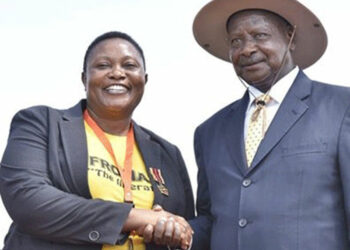George Fred Kagimu arrived in Mukono with a dream to build a mega-sports adventure city.
As a big motorsport fan, Kagimu dearly wanted to realize the Festino City Project as he enjoyed his retirement after years of globetrotting.
Freshly retired from fuel giant Total where he was a sales and marketing director, Zambia in 2008, and has worked in several multinational organizations that saw him visit more than 50 countries across the globe, this was the time for him to clear his head.
Festino was the business model closest to his heart and if successful, it had a key to unlock the potential of Mukono town, scale up its growth and offer numerous opportunities to locals and those beyond the town’s borders.
“I came to Mukono to start a big business. A city for sports training, and adventure,” Kagimu, a man with measured words, has previously stated.
Along his travels, Kagimu had met Prince Muhammed Bin Salman in France. Prince Salman, the Crown Prince of Saudi Arabia is an ardent motorsport fan and promoter of the sport back home where he has served as president of Motorsport in the United Arab Emirates (UAE).
 Having followed fans supporting Ugandan motorsport events keenly, he was willing to inject USD5 million (Shs17.7 billion or an equivalent of Mukono Municipality’s current budget) into an adventure sports park in Uganda.
Having followed fans supporting Ugandan motorsport events keenly, he was willing to inject USD5 million (Shs17.7 billion or an equivalent of Mukono Municipality’s current budget) into an adventure sports park in Uganda.
Such an investment would have sent Mukono into overdrive.
However, Prince Muhammed caught cold feet when it was soon realized that something was amiss in the fast-growing town, located only 25km east of Uganda’s capital city.
Mukono did not have a master physical plan.
Without the master physical plan, no serious investor would inject such monies into a business location whose future was uncertain.
That is how Festino City’s promise slowed down.
The current site is a major crowd attraction, particularly for motor rally fans and drivers but it is not even a quarter of its initial dream.
Entering politics
Using his own money, Kagimu decided to go ahead with the development, one brick at a time.
But it was never going to be smooth sailing.
Festino City needed to be in a more well-planned town – one that could help unlock development opportunities.
And this could only be done with him at the helm.

But politics was one of the business disablers in the town. His colleagues in the Chamber of Commerce (Mukono chapter which he served as chairman) shared similar experiences of missed opportunities over the unplanned area.
In 2015 he joined the race for mayorship on the Democratic Party ticket and won the race to run the municipality between 2016-21.
In five years, Kagimu has actually supervised the transformation of Mukono into a more live-able town, cleared garbage from the streets, graded roads, and improved street lights. There is more investor confidence witnessed in the upsurge of factories opening up in the two industrial parks surrounding Mukono in Namanve and Mbalala.
As he leaves office, Kagimu admits he is happy 50 percent of the master physical plan of Mukono Municipality has been completed, mentioning plans of the wards including Misindye, Bukerere, Nyenje, Ggulu and part of Ntawo, whose mapping and development plans have been documented.
“We have marked well where we want markets, schools, recreational centres, green areas, parks, shopping malls, etc,” Mr Kagimu explains, adding that his Council started with areas that are not densely populated.
“We have involved people. Now we know where we want to go,” adds the ex-mayor who contested for Mukono Municipality Member of Parliament seat and lost.
Leadership
“I am grateful the people of Mukono allowed me to participate in leadership,” he says.
Leadership has been around Kagimu’s life.
In the corporate world, he served with distinction in different capacities as a manager. In sports, he was president of the Federation of Motorsport Clubs in Uganda between 2010-14.
He also served in several leadership capacities as chairman of the National Chamber of Commerce (Mukono), President of the Rotary Club. In the Catholic Church, he served in several laity positions in Kampala Archdiocese, among others.
If you trace his leadership skills, one has to go back as far as St Henry’s College Kitovu in Masaka where he was head prefect in 1978.
Connecting Mukono
Kagimu’s biggest contribution to Mukono has been in opening feeder roads in the town.
“If you want to see any town develop, pave roads,” he says.
“We need more bypass roads. We want them developed to become commercial streets and have them expanded,” he said.
When in Mukono, one can avoid traffic jams by using roads behind Mukono hospital as well as the Market.
It is now possible to go through Mukono without using the highway.

“We have undertaken the same things in Seeta, under Goma division. Roads have been opened in Bajjo, and Lufula to help Seeta develop further,” he says.
As he leaves office, Kagimu says, he is ‘confident the city of Mukono municipality will grow in the right direction, emphasizing that the most important thing is to have new traffic circulating in the area.
The other road project he is proud of is the two kilometers stretch in Nsomere swamp which joins garbage dumping site Katikolo in Mukono Central Division to Kitale in Goma Division. This was constructed with support from the government.
This has eased the transportation of garbage collected in Goma to Katikolo dumping site which has saved the Council money in fuel and lifted traffic off the ever-congested highway.
Budugala through Nyenje to Joggo and Bukerere, a major area for sand and bricks as well as Njogezi from DFI through Ntawo swamp to Bajjo have all been connected.
Another positive is residents of Kitale – another fast developing centre – can now travel to Katikolo with ease to access health and education services.
With all these roads, the traffic coming from Namanve, Bugujju, Nabuti, Salongo John, Namumira, Namuyenje to Mbalala will be kept away from the Jinja Kampala highway.
Kagimu is grateful that the government has accepted these road plans including another road through Kiwanga, behind Seeta, Bajjo, DFI, Festino, Nasuuti, Kitete, Nakawolole swamp, Kirangira back to Jinja road.
These projects will be completed within three to five years.
When that is done, Mukono can grow faster and smarter, and enable residents and visitors live in a more prosperous, cleaner, and safer place.
“For the business community, we gain more if this becomes a city. You have to provide good roads, street lighting, transport service,” he says.
Mukono future
Mukono’s population doubles every 10 years with the latest census putting the number at approximately 500,000 people.
During the first Covid lockdown, Kagimu was part of the team which distributed food relief to about 120,000 residents of Seeta Parish.
A gateway to Kampala, Mukono supplies a good fraction of Kampala’s day population and should be highly considered in terms of budgeting.
“The location of our town is one of the reasons numbers keep growing because when our brothers and sisters come from eastern Uganda, use the town as their launchpad into the capital,” Kagimu says.
Population growth is buoyed by the number of students at some of the best schools in the district as well as Uganda Christian University who stay back after graduation looking for job opportunities. These are just a fraction of those who come in to find jobs in the Industrial parks of Namanve and Mbalala.

It is for such reasons among others that the pressure on services keeps growing yet the resources in the local government are so little.
Kagimu laments that when it comes to health and education, it is regrettable that Namanve is languishing. To demonstrate the dire need he says one of the schools in Kolo had 280 pupils four years ago, but now it has 1,400 pupils, because of the rising number of residents in the Industrial area.
Health
Mukono Municipal Council has been running Mukono Health Centre IV before it was elevated to the hospital level.
“We bought an ambulance for the hospital too,” Kagimu says.
Mukono Municipal Council has been dedicating about Shs100 million per year from local revenue, in addition to the funds from government and donors, to further develop it. The hospital now receives patients from all over Mukono district, and as far as Kira Municipality in Wakiso district and Buikwe district.
The facility was upgraded after President Museveni promised Shs300 million to carry out repairs. The money was instead used to build the Out-Patient Department’s first floor – which has turned the health centre into a health hub. The government responded positively by providing an additional Shs750 million funds to complete the structure.
The people of the city of Mukono can lead a healthier life when Goma health centre is also upgraded to Health Centre IV as well as Kyungu to health centre III.
It is very important that Mukono Municipal Council technical staff continue to run the health sector in the municipality because they have registered several successes.
There is talk of Mukono hospital being absorbed by the district, but this can only bring about experiences other district hospitals suffer across the country – poor management and monitoring.
When Mukono hospital remains in the hands of the Municipal authorities, this can enhance competitive urban health services.
Youth centre
When Kagimu was elected mayor, a youth centre at the foundation level had been in existence for over 10 years.
“We started devoting Shs100 million per year for the project and now the structure has been completed,” he says.
The devotion towards the structure, he says, is because if you are going to help youth in different things affecting them including, the employment you must know them.
“You create an area where you can find them and know who they are and what they do,” Kagimu explains, adding that the center – built with support from the city of Wimabee in Sweden – is a common pool to support youth.
In addition, Rotary clubs of Sweden and Mukono will work out a plan to furnish the centres.
Budget
Kagimu says local governments are constrained with cash.
“We need to see the government giving more money to local government.” He says, adding that only 10 per cent of the budget is given to local governments yet it is districts, municipalities, sub-counties closest to the people.
“Local governments are closest to points of service delivery,” he says. However, the money sent goes into salaries, and allowances of technical staff and not actual services such as roads, schools, health centres, or the environment.
“The master plan of development has to take into account the common person,” he says.
“We need to think about Health care for all and low-cost housing, as well as develop UPE schools for education at a small fee.”
What next for Kagimu
Kagimu says he is going to throw himself back into the business and voluntary activities as he was before.
“I have a number of responsibilities in Rotary Club. I have also formed an NGO to deal in environment and garbage management.”
The ex-mayor regrets that his business was not spared by Covid19.
“It is badly affected,” he says, adding that he was open to any opportunities coming his way from several fronts.
“I missed an opportunity to demonstrate how the people of Mukono can have an effective MP,” he underscores. “Politics should be used to transform the lives of our people.”
Kagimu says he still has his eyes on politics and wants to use the platform to get development funders, get training opportunities for youths to improve on what they are doing.
Do you have a story in your community or an opinion to share with us: Email us at editorial@watchdoguganda.com










